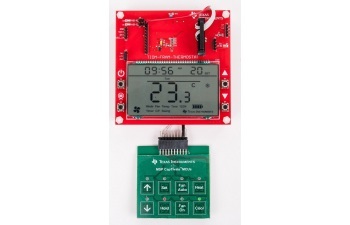SSZTBU2 December 2015 MSP430FR2633 , MSP430FR4133
A major challenge for developing capacitive touch interfaces is managing design trade-offs. An appropriate balance of features such as low-power operation, noise immunity and response time must be made when developing capacitive touch products. Capacitive touch thermostat user interface TI Designs reference design shows you how to optimize this balance for line powered and battery powered use cases. These two use cases are commonly found in building automation applications.

Products that are designed to be line powered—wall-mounted controllers— must use a capacitive touch solution with noise immunity features to ensure proper behavior in electrically noisy environments. Unfortunately, this often comes at the cost of higher power consumption, and products that are intended to be battery powered— remote control— will often need to sacrifice some noise immunity features in order to achieve an ultra-low-power profile. In both cases, the solution must use an appropriate sensor measurement rate and filtering to provide a fast response time for the best user experience.
To solve these problems, the Capacitive touch thermostat user interface TI Designs reference design uses a MSP430™ microcontroller (MCU) with CapTIvate™ technology and meet the needs of both use cases. It also uses FRAM technology to store critical variables that define the application state. This enables the design to maintain a low-power profile and seamlessly retain its application state through power-loss.
Thanks to the communication module in the CapTIvate technology Software library, the design provides a simple solution for integrating capacitive touch technology with a LCD display. A demo is included with the reference design that demonstrates how the communication module can be used to connect a MSP MCU with CapTIvate technology with a host processor over a I2C interface. The demo uses an MSP430FR2633 MCU with CapTIvate technology and a MSP430FR4133 MCU with an integrated LCD driver to create a complete, low-power, FRAM thermostat design.
A summary of the specific design issues related to capacitive touch development that are addressed by the Capacitive touch thermostat user interface TI Designs reference design can be found below:
- Meeting electromagnetic compatibility (EMC) standards at the commercial product level with layout techniques, frequency hopping, and a multi-frequency processing algorithm
- Providing more than a year of lifetime on AAA batteries with a low-power profile
- Using FRAM to retain application state through power-loss
- Developing a capacitive touch interface with a dedicated capacitive touch controller, a host processor and a I2C serial communication interface
- Create a design that uses software for various switch implementations, such as momentary and maintained switches
Visit the below links to learn more about Capacitive touch thermostat user interface TI Designs reference design: